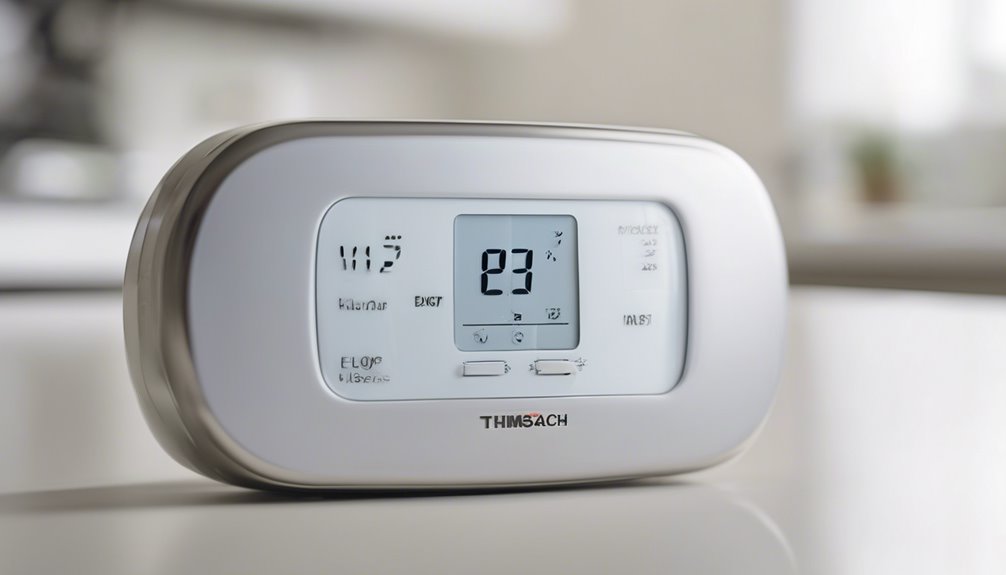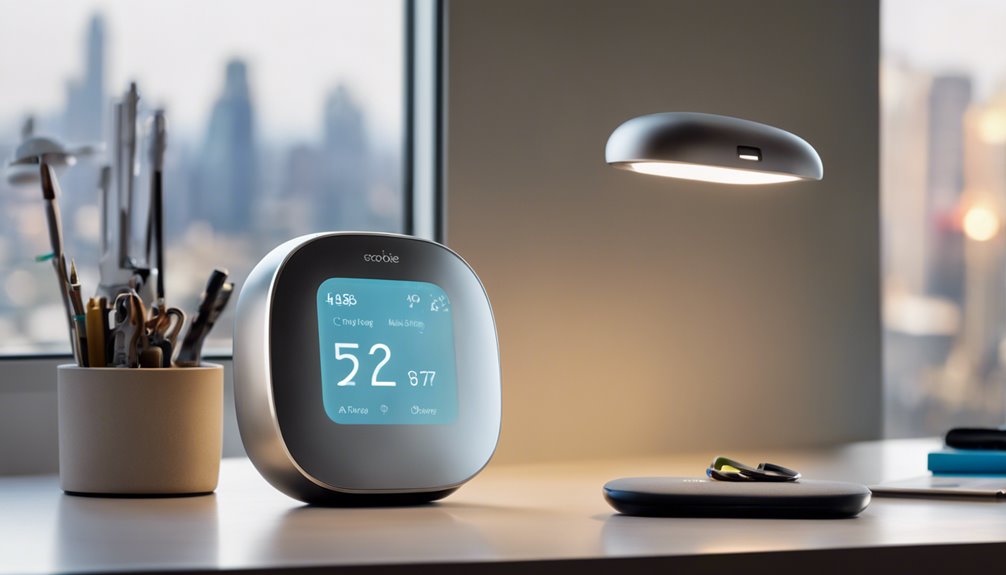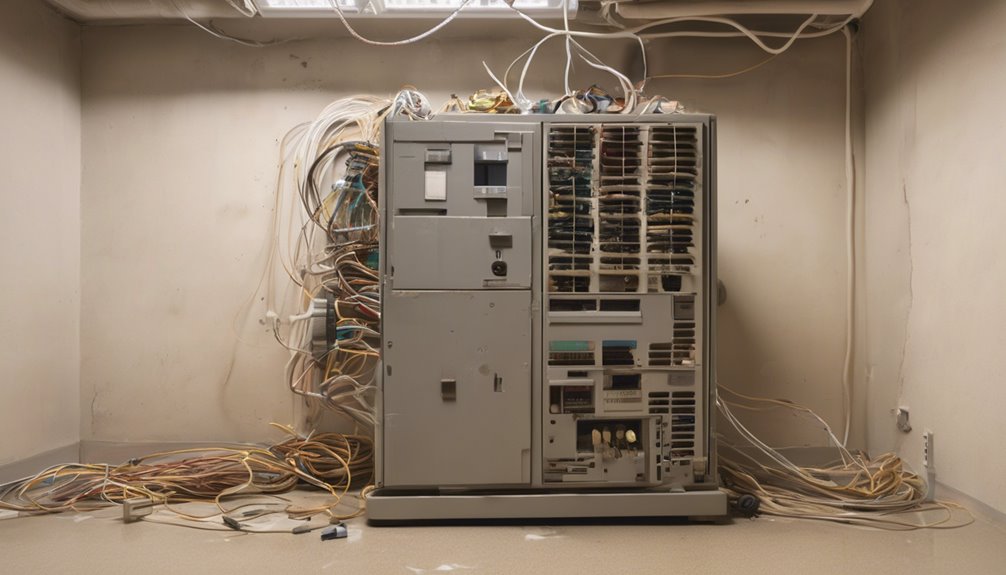To save electricity with your air conditioner, you need to find the sweet spot where comfort meets energy efficiency, and it starts with understanding that the ideal temperature range is between 68-70°F (20-21°C), which balances a high comfort level with low energy consumption. By setting your thermostat to this range, you'll be well on your way to reducing your energy bills. But there's more to it than just a single number – optimizing your AC settings, sealing air leaks, and making seasonal adjustments can make a big difference. Want to learn more about how to maximize your energy savings?
Key Takeaways
- Setting the AC temperature between 68-70°F (20-21°C) balances comfort and energy efficiency, resulting in low energy consumption.
- Raising the temperature by 1-2°F (0.5-1°C) can save up to 5% on electricity costs without compromising comfort.
- Adjusting the thermostat based on personal comfort levels, activity levels, and humidity ensures optimal AC performance and energy savings.
- Installing a smart thermostat can learn schedules and preferences, scheduling temperature changes to optimize cooling system performance and maximize energy savings.
- Seasonal adjustments, such as raising the temperature in summer and lowering it in winter, can significantly reduce energy waste and consumption.
Understanding Your Cooling Needs
When it comes to setting your AC temperature, understanding your cooling needs is crucial.
You need to consider factors that affect how you feel comfortable in your home. For instance, you should think about the thermostat placement. Is it near a window or a heat source? This can impact its accuracy and your cooling habits.
If you're someone who likes it cool when sleeping, you might want to set the temperature lower at night. On the other hand, if you're away from home during the day, you can set it higher to save energy.
The Ideal Temperature Range
Your ideal temperature range depends on various factors, including your personal comfort level, activity level, and the humidity in your home. You want to find a sweet spot that balances summer comfort with energy efficiency.
| Temperature Range | Energy Consumption | Comfort Level |
|---|---|---|
| 68-70°F (20-21°C) | Low | High |
| 70-72°F (21-22°C) | Medium | Medium |
| 72-75°F (22-24°C) | High | Low |
Keep in mind that temperature variability can significantly impact your energy bills. By understanding your ideal temperature range, you can optimize your AC settings to save electricity without sacrificing comfort.
Factors Affecting AC Efficiency
Finding your ideal temperature range is just the starting point.
You also need to consider other factors that affect your air conditioner's efficiency. Air leaks, for instance, can significantly reduce your AC's performance. Make sure to seal any gaps or cracks around doors, windows, and ducts to prevent cool air from escaping.
Don't let air leaks sabotage your AC's performance: seal gaps around doors, windows, and ducts to keep cool air in.
Window shading is another crucial factor. Direct sunlight can heat up your home, forcing your AC to work harder. Install window shades or blinds to block out the sun's rays.
Additionally, keep your AC unit clean and well-maintained to ensure it runs smoothly. By addressing these factors, you can optimize your AC's efficiency and reduce your energy consumption.
Optimizing Your AC Settings
Set your thermostat to the ideal temperature you've determined, and then fine-tune it by adjusting the fan mode and airflow direction.
This will help you optimize your AC settings for maximum efficiency. Consider investing in a smart thermostat, which can learn your schedule and preferences to optimize cooling and heating.
You can also install zoning systems, which allow you to control the temperature in different areas of your home. This way, you can cool or heat only the rooms that need it, reducing energy waste.
Putting It All Together for Maximum Savings
How much more can you save by implementing all these energy-efficient strategies?
By combining the right AC temperature setting with smart thermostats and seasonal adjustments, you can maximize your energy savings.
Smart thermostats let you schedule temperature changes and optimize your cooling system's performance. Make seasonal adjustments by raising the temperature in summer and lowering it in winter to reduce energy consumption.
Optimize your cooling system's performance with smart thermostats and seasonal temperature adjustments for maximum energy savings.
You can also adjust the temperature when you're not home or when you're sleeping to save even more.
Frequently Asked Questions
Can I Save Energy by Using a Ceiling Fan With My AC?
You can definitely save energy by using a ceiling fan with your AC. In summer mode, run your fan in a counterclockwise direction to push cool air down, making your AC more efficient and reducing energy consumption.
Will a Programmable Thermostat Help Me Save Electricity?
You're wondering if a programmable thermostat can help you save electricity. The answer is yes! With smart scheduling and energy monitoring, you'll optimize your temperature settings, reducing waste and energy consumption when you're not home or sleeping.
Do Energy-Efficient AC Units Really Make a Difference?
You're wondering if energy-efficient AC units really make a difference. They do! Look for units with high energy ratings, like ENERGY STAR certification. These units adapt to seasonal impacts, optimizing energy use when you need it most, and saving you money in the long run.
Can I Use a Dehumidifier to Reduce AC Energy Consumption?
You're wondering if running a dehumidifier can help reduce your AC's energy consumption. Yes, you can! By removing excess moisture from humid air, you'll lower moisture levels, allowing your AC to cool more efficiently and use less energy.
Will Closing Vents in Unused Rooms Save Me Energy?
You're wondering if closing vents in unused rooms will save you energy. By doing so, you're restricting airflow, which can lead to ventilation optimization, but it's not a straightforward answer, as it depends on your duct system and AC unit's design.
Conclusion
You've optimized your AC settings, and now you're on your way to saving electricity. By understanding your cooling needs, finding the ideal temperature range, and considering factors that affect AC efficiency, you've taken the first steps towards reducing your energy consumption. With these tips, you can enjoy a cooler home while keeping your wallet happy.



